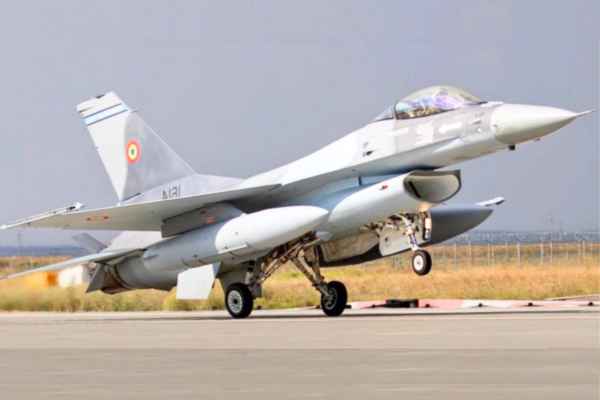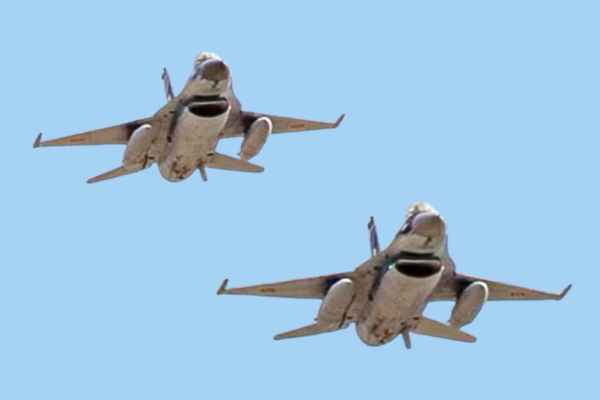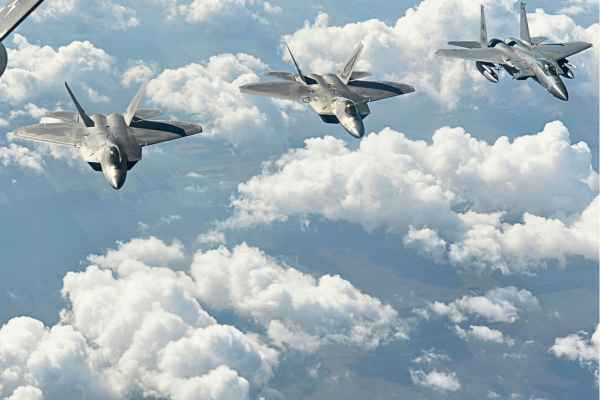In recent developments that underscore the growing tensions in Eastern Europe, the United States has deployed F-16 fighter jets to Romania.
This strategic move aims to reinforce air policing efforts of NATO in the Black Sea region, where Russian drones and cruise missiles have repeatedly violated airspace. But as military forces from both sides continue to operate in this volatile area, questions arise about the potential consequences and the delicate balance of power in a region no stranger to NATO-Kremlin war scares.
The Arrival of US F-16s – Strengthening NATO
On September 22, four US Air Force F-16 fighter jets touched down at Fetesti Air Base in eastern Romania. Their mission? To bolster NATO’s air policing operations in the Black Sea region. This deployment is part of a larger NATO effort to secure the skies over Eastern Europe, which have been increasingly breached by Russian drones and cruise missiles.

The arrival of these F-16s represents a significant step in enhancing the region’s security. These advanced fighter jets, identified as originating from the U.S Air Force’s 480th Fighter Squadron, are equipped for extended air superiority operations. Each aircraft is armed with auxiliary fuel tanks, twin AAMRAM/AIM-120 long-range missiles, and four AIM-9 medium-range missiles.
Response to Russian Incursions by NATO
NATO has not been passive in the face of these airspace violations. In a clear message to Russia, a September 17 announcement declared that airspace along Romania’s eastern border would be off-limits to all aircraft, with NATO taking on the responsibility of enforcing this no-fly zone. This decision came after multiple incidents involving Russian missile and drone strikes on Ukrainian civilian port facilities along the Danube River, which marks the regional border between Ukraine and NATO territory.

These strikes, some of which resulted in Russian drones detonating on Romanian soil, caused embarrassment for Romania’s government, which had adopted a relatively non-confrontational stance toward Russia’s invasion of Ukraine in 2022.
The Black Sea Tensions
The situation in the Black Sea region remains complex, with tensions simmering not only in the skies but also on the ground. Romanian F-16s stationed at Fetesti and other airfields in eastern Romania regularly receive support from combat elements of other NATO states to conduct air policing operations over the Black Sea. Countries like the Netherlands, Italy, Spain, and Great Britain have all contributed to these efforts in the past.
Yet, it’s not just airspace violations that pose a challenge. NATO observation and reconnaissance aircraft patrolling near the Russia-occupied Crimean peninsula often find themselves at the center of tensions. Russia believes these aircraft are gathering targeting data for Ukrainian military intelligence, leading to frequent harassment and interference by Russian combat jets.
Past Incidents Raise Concerns
The recent history of encounters in this region is worrisome. In March 2023, a Russian Su-27 fighter jet accidentally collided with a US Air Force MQ-9 Reaper drone in international airspace, resulting in the destruction of the drone. While this incident could have invoked NATO’s Article 5, which allows the alliance to respond with military force to attacks on NATO units and personnel, it was downplayed by both Moscow and Washington.
A year earlier, in September 2022, a Russian Su-27 fired two missiles at an unarmed Royal Air Force RC-135 reconnaissance aircraft over the Black Sea. Although the incident was initially portrayed as accidental, it was later revealed to have been intentional. This act, an attack on a NATO aircraft, could have been interpreted as an act of war against the alliance.
Future Prospects and Training Initiatives
Despite these tensions, NATO continues its efforts to bolster regional security. Fetesti air base is set to play a crucial role in training Ukrainian pilots on US-made F-16 fighter jets, an initiative scheduled to commence in August. Importantly, Ukrainian pilots undergoing training in Romania will not participate in any NATO actions against Russian airspace violations from within Ukraine.
As Eastern Europe remains a powder keg of geopolitical tensions, the deployment of US F-16s in Romania serves as a stark reminder of the fragile peace in the region. While the intent is to reinforce NATO’s presence and deter further airspace violations, the balance between safeguarding sovereignty and avoiding escalation remains precarious. As the world watches these developments, the future of this strategically significant region hangs in the balance.




